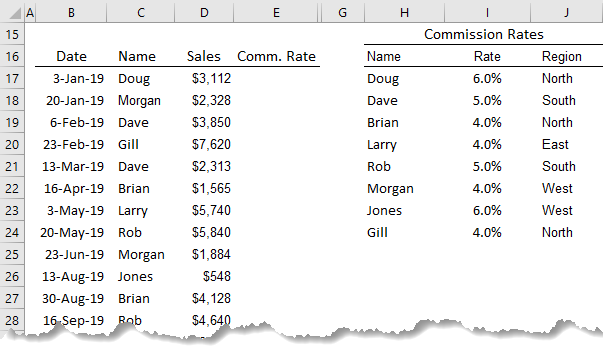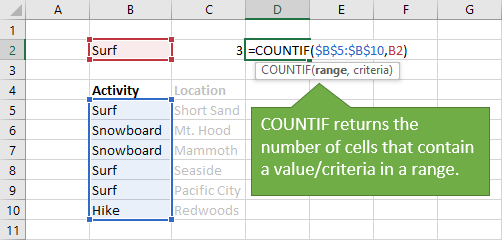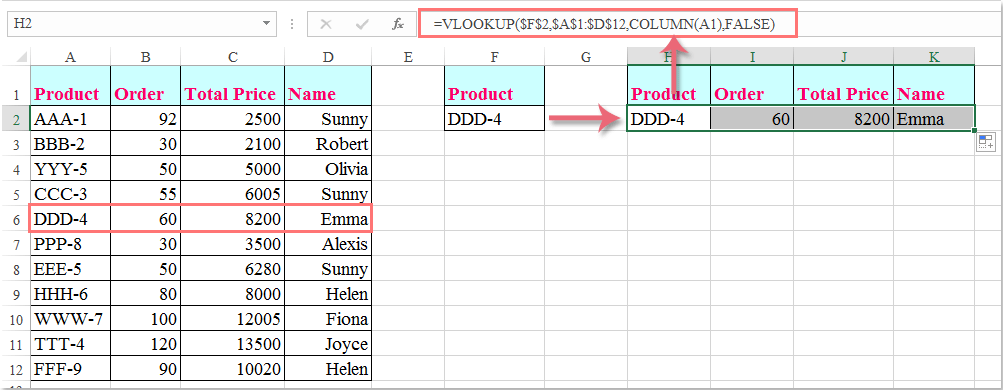
- #How to use vlookup in excel to compute total how to#
- #How to use vlookup in excel to compute total pdf#
#How to use vlookup in excel to compute total how to#
How to sum up numbers in multiple columns using VLOOKUP + SUM in Excel VBA Thus, you need to do the VLOOKUP in a loop if you want to return multiple results. However, in VBA, when you pass an array in the third argument, the VLOOKUP will return the result for the first element only.

The syntax is similar compared to when you’re using it in a cell, and the number of arguments is also the same. WorksheetFunction.Vlookup(lookup_value, table_array, col_index_number, ) Where Number1,Number2.,Number30 are the values that you want to sum. WorksheetFunction.Sum(Number1,Number2.,Number30) You can use them in VBA by typing WorksheetFunction. How to write a formula of VLOOKUP + SUM in Excel VBAīoth SUM and VLOOKUP are worksheet functions in Excel. The best part? You can even set automatic data refresh on the schedule you want!Ĭheck out the complete list of Coupler.io integration with Excel. With it, you can save your time by importing data from different sources like Airtable, Jira, Shopify, HubSpot, and many others into Excel. Tip: You can pull data from external sources into Excel without coding by using an integration tool such as Coupler.io. Additionally, in a specific part of that report, you need to do a calculation using SUM and VLOOKUP.
#How to use vlookup in excel to compute total pdf#
Let’s say, every week you need to pull sales data from several external systems into Excel, do a bit of cleanup, and send a report in PDF related to a certain product. You may want to use SUM and VLOOKUP in VBA, for example, when you need to do it as a part of a larger task. A dialog box will appear, allowing you to evaluate the formula, expression by expression.

Then, in the Formula tab, click on the Evaluate Formula button in the Formula Auditing group. To do this, first, select the cell that we want to evaluate, in this case H2. Tip: You can use the Evaluate Formula dialog box to observe how the XLOOKUP functions are being evaluated and their return result. After the nested functions have been executed, the SUM function would look like this: =SUM(C7:D11) The first XLOOKUP returns the first cell reference in the range, while the second XLOOKUP returns the last cell reference in the range. The formula uses two nested XLOOKUP functions to create a range dynamically by returning the starting cell and ending cell on either side of the colon range operator. Also, see our guide on XLOOKUP: Excel XLOOKUP function. Please note that the XLOOKUP function only works in Microsoft 365 and Excel for the web (Excel Online version). One alternative is to use the SUM function with two nested XLOOKUP functions, as shown in the following formula: =SUM(XLOOKUP(F2,A2:A16,C2:D16):XLOOKUP(G2,A2:A16,C2:D16)) Notice that there are even rows with the same order dates.Ī combination of SUM and VLOOKUP won’t be able to solve this problem.

There are two columns and a few rows that you need to sum. In the example below, suppose you want to sum up the sales of multiple records by order date. #6: Excel VLOOKUP and SUM values between two dates The useful part of this combination is when you use an array of numbers in the third parameter of VLOOKUP, for example: =SUM(VLOOKUP(lookup_value, table_array, įinally, the SUMPRODUCT calculates the total of all the elements in the above array and returns 36000. This is the common combination formula for SUM + VLOOKUP: =SUM(VLOOKUP(lookup_value, table_array, col_index_num, ) Why not just use =SUM(B6:M6)? Well, of course you can! But what if you want to determine how much someone spends by changing the value in A1? In this case, you would need to use a combination of VLOOKUP and SUM instead. You may be wondering if you could simply use the SUM function. For example, to find the total purchase of a specific customer across 12 months, as the following screenshot shows: In most situations, the combination of SUM and VLOOKUP functions in Excel is useful when calculating the total of matching values in multiple columns. Wrapping up How to use SUM and VLOOKUP together in Excel


 0 kommentar(er)
0 kommentar(er)
